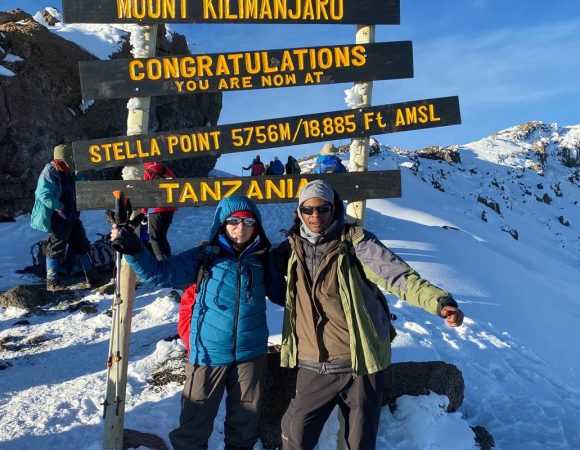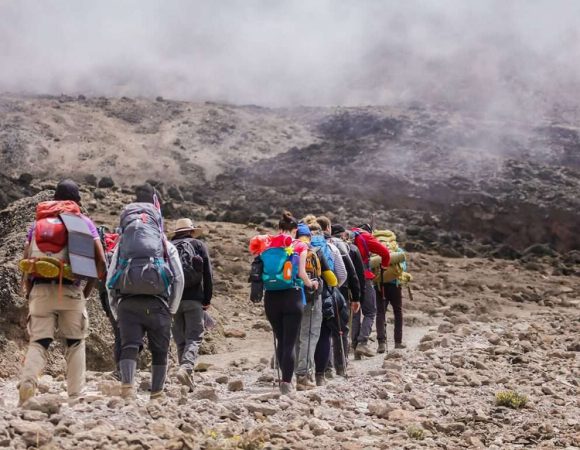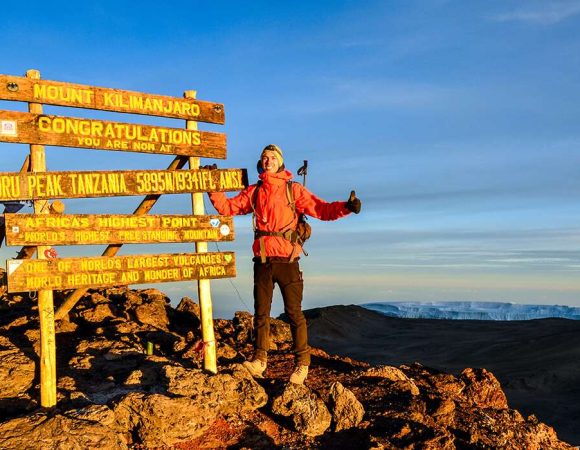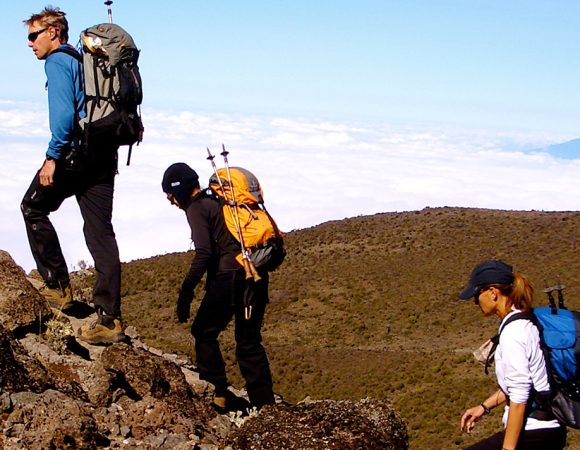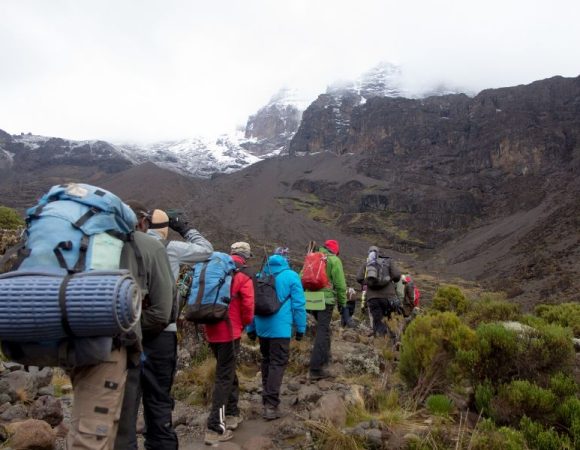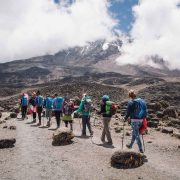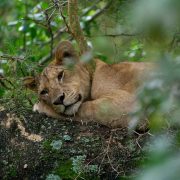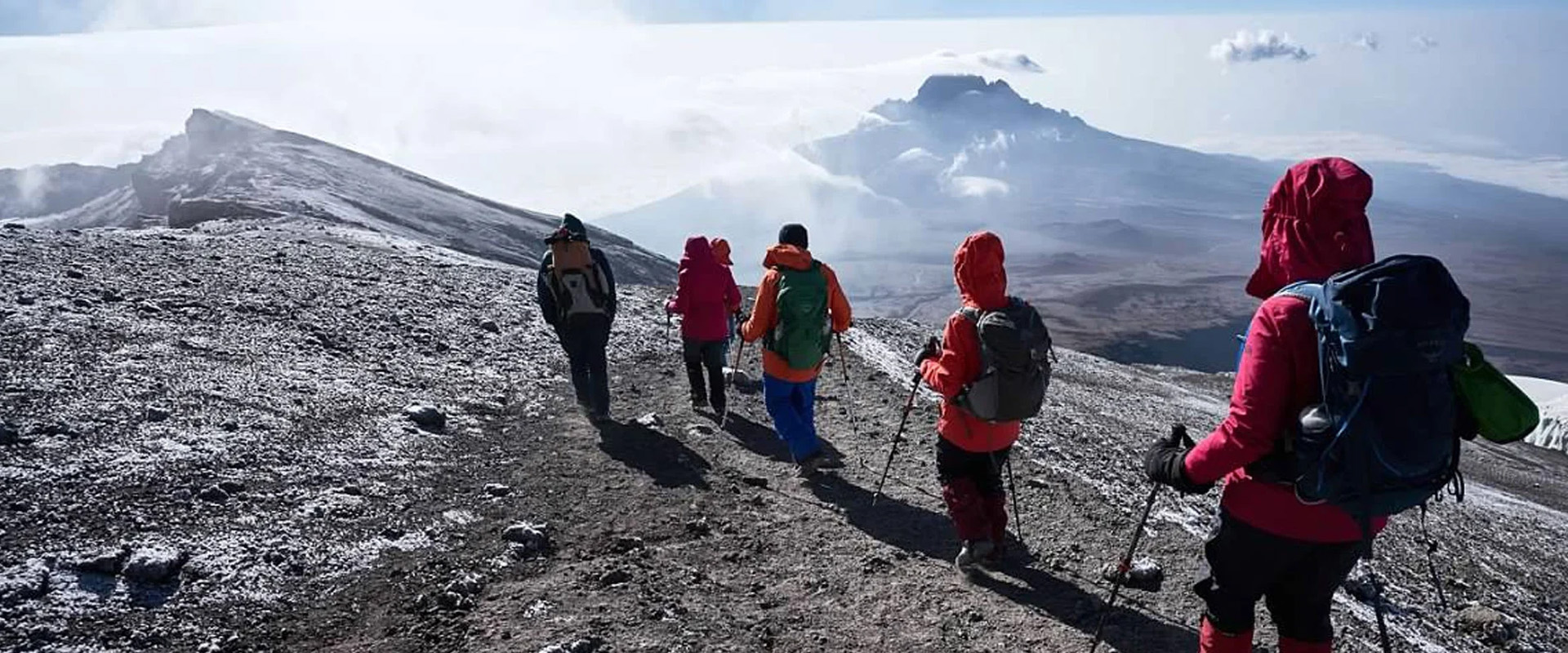
How to Choose the Best Kilimanjaro Trekking Route
Selecting the right route for your Kilimanjaro trek is crucial. There are at least seven main options to consider:
- Marangu Route (known as ‘the tourist route’ and the ‘Coca Cola Route’)
- Machame Route (the ‘Whiskey Route’)
- Lemosho Route (often regarded as the ‘most scenic’)
- Rongai Route (the only approach from the north)
- Shira Route (a high-altitude approach from the west)
- Northern Circuit (a route circling the northern slopes)
- Umbwe Route (the most direct route to the summit)
Each route has its own benefits and drawbacks. The Marangu Route is popular with beginners due to its less steep gradient and shorter duration, but it can be busier and more challenging for acclimatisation. The Umbwe Route is one of the most difficult and is best suited for those with mountaineering experience. It’s advisable to acclimatise on another mountain, such as Mount Meru, before attempting this route.
When choosing your Kilimanjaro route, consider the following factors:
- Acclimatisation: Some routes have steeper climbs, increasing the risk of altitude sickness.
- Difficulty: Assess the overall challenge, particularly the summit night, by looking at success rates.
- Accommodation: Different routes offer various types of lodging.
- Crowds: Some routes are busier than others.
- Scenery: The views can greatly enhance your hiking experience.
We have provided a detailed breakdown of each Kilimanjaro route to help you make an informed decision for your trek.
1. The Marangu Route
Perfect for: Those who don’t want to camp or are on a budget
Distance: 70 km / 5-6 Days
The Marangu Route, often referred to as the “tourist route,” is used by about 50% of climbers. It is the only Kilimanjaro route that offers small hut accommodations instead of camping. These huts, which sell bottled Coke and other essentials, give Marangu its nickname, the “Coca-Cola Route.” The huts are basic, with dining halls, beds, mattresses, and pillows, offering more comfort than tents.
The trek starts at the southeast Marangu Gate, near the town of Moshi, making it a convenient choice for many trekkers. The ascent and descent follow the same trail, limiting the section of the mountain you see and making the route one of the busiest. While the overall climb is not steep and suitable for beginners, the summit night ascent is challenging. Although the route can be completed in five days, a six-day trek is recommended for better acclimatisation. However, the huts’ elevation difference of only 1000 meters is not ideal for acclimatisation, resulting in a lower success rate.
Factors that make Marangu a budget-friendly option include its proximity to Moshi, shorter trek duration, and lack of camping equipment needed. Despite being considered ‘easy,’ it has a lower success rate due to underestimated difficulty and inadequate preparation by many trekkers. Proper training and choosing the six-day option can improve your chances of a successful summit.
Although less scenic than other routes, Marangu still takes you to the summit, ‘Uhuru Peak,’ offering great views of one of Kilimanjaro’s volcanic cones, Mawenzi. Returning via the same path means you’ll see the same sights on your descent, but with the added sense of achievement.
If you’re short on time, on a tight budget, dislike camping, and prefer a less challenging trek, Marangu might be the right choice for you.
2. The Machame Route
Perfect for: Diverse scenery, and those who want to ‘trek high and sleep low’
Distance: 61 km / 6-7 Days
Known as the ‘Whiskey Route,’ Machame is a tougher climb and not for the unprepared. It is the second busiest Kilimanjaro route after Marangu but offers a very different experience. Starting at the Machame Gate in the rainforest zone, this route traverses multiple ecosystems and five different climatic zones, offering stunning views, especially as you reach Shira Camp on the Shira volcanic cone plateau.
Leaving the Shira Plateau, the climb becomes steeper and more undulating, allowing for the crucial ‘trek high, sleep low’ acclimatisation strategy. While the route can be completed in six days, a seven-day trek is recommended for a higher success rate. Machame is a camping route with no huts, so good gear and guiding are essential. Proper rest, nutrition, and equipment, like a warm sleeping bag, are crucial for a successful summit attempt.
The route includes notable features like the Lava Tower and Barranco Wall, which appear more challenging than they are. The trek continues to Barafu Camp, the cold, high-altitude base camp for the summit attempt, typically starting just before midnight to reach the summit at sunrise. The descent follows a different path to Mweka Camp, returning to the rainforest zone, where spirits are high and campfire songs are common.
3. The Lemosho Route
Perfect for: Getting off the beaten path and wildlife spotting
Distance: 67 km / 7-8 Days
The Lemosho Route, considered the most scenic, was created as an alternative to the Shira Route. Starting at the lower Lemosho Gate, it offers a more gradual ascent, allowing better acclimatisation. The remote western side means fewer trekkers in the initial days and a higher chance of seeing wildlife like elephants.
The route joins the Shira Route on Day 2 and the Machame Route on Day 3. The longer duration of seven to eight days makes it ideal for those comfortable with camping and seeking a less crowded trek.
4. The Rongai Route
Perfect for: Those seeking a milder ascent on a remote route
Distance: 74 km / 6-7 Days
The Rongai Route is the only one approaching from the north, starting at the Nalemoru Gate. The remote start point means fewer trekkers and a higher chance of wildlife sightings. The northern side receives less rain, which is beneficial during the wet season. The route’s milder ascent features flatter sections, which are less strenuous but offer fewer opportunities for ‘trek high, sleep low’ acclimatisation.
The descent follows the Marangu Route. While budget considerations may be higher, the remote and gradual ascent makes Rongai a strong contender for a peaceful trek.
5. The Shira Route
Perfect for: Experienced high-altitude trekkers
Distance: 58 km / 6-8 Days
Starting at the high-altitude Shira Gate (3,500 meters), the Shira Route presents a significant altitude challenge from the beginning. This rapid altitude gain makes it less ideal for first-time trekkers and better suited for those with high-altitude experience. The route joins the Lemosho Route on Day 2 and the Machame Route on Day 3, providing a scenic but challenging trek.
Due to its remote start, it is more expensive and sees fewer climbers until it merges with Machame. An eight-day trek is recommended for better acclimatisation and a higher success rate.
6. The Northern Circuit
Perfect for: Those summiting for a second time and seeking new experiences
Distance: 88 km / 8-9 Days
The Northern Circuit, the newest Kilimanjaro route, begins at the Londorossi Gate in the west, following the Lemosho Route to the Lava Tower. Unlike other routes, it then heads north to Moir Hut and circles the northern slopes, joining the Rongai Route variation at Third Cave. This route offers the highest success rate due to excellent ‘climb high, sleep low’ opportunities, though it is also one of the longest and most expensive.
7. The Umbwe Route
Perfect for: Experienced trekkers seeking a challenge
Distance: 48 km / 5-7 Days
The Umbwe Route is the least crowded and most challenging, offering the most direct path to the summit. Beginning at the Machame Gate, it starts with a steep climb through the rainforest. The steep ascent continues, offering little time for acclimatisation and resulting in a low success rate. Most climbers merge with the Machame Route on the second day, summiting from Barafu Camp. The route’s difficulty and technical challenges make it suitable only for experienced trekkers.
Conclusion: Which is the Best Route Up Kilimanjaro?
Each Kilimanjaro route has its benefits and drawbacks. Your choice depends on your preferences and experience. For first-time climbers, the Machame, Lemosho, or Rongai routes are recommended for their lower crowd levels, higher success rates, and varied scenery. Avoid the Umbwe Route unless you are an experienced trekker due to its difficulty and higher risk of altitude sickness. Ultimately, the best route is the one that aligns with your fitness, experience, and trekking goals.


